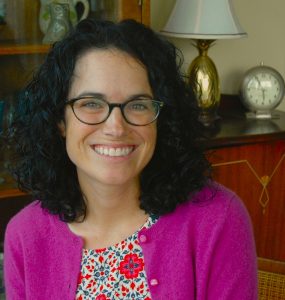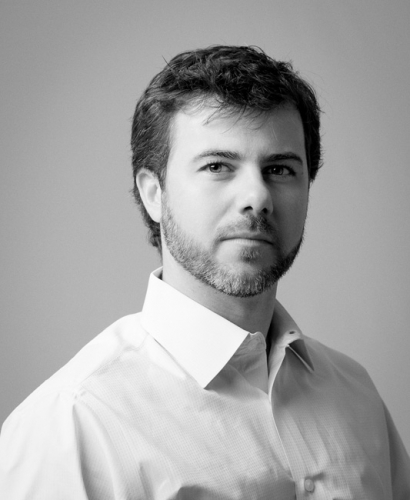 |
 |
Last fall, professors Katherine Turk and Benjamin Waterhouse combined forces to teach a sixty-person undergraduate course on “America in the 1970s.” They alternated lectures and took turns leading weekly recitation sections. Despite some challenges, both saw great benefits for both students and faculty. The experience was “very much worth it and I think the students got that as well,” Waterhouse said. So why don’t we do it more often?
The Center for Faculty Excellence advises faculty that “your peers are your best teachers,” and “America in the 1970s” bore this out. “We have a very constructive and very collegial department yet our teaching is often done in isolation,” Waterhouse said. Simply sitting in on another faculty members’ lectures can be “incredibly interesting and educational – both in terms of the subject matter and in seeing the way someone else teaches.” So the chance to teach together was an even greater—and more demanding—“opportunity to learn from each other.”
Turk said that she “gained new insights about myself as a teacher.” “Co-creating a course from scratch led me to reevaluate my own habits in syllabus design, assignments, and course structure.” Co-teaching prevents the isolation that faculty sometimes feel in teaching, the burden of “making all these make-or-break decisions on your own,” said Waterhouse.
Since both professors lectured and ran recitations, the students got to know two faculty for the price of one. If “I just taught a sixty person class with a TA I wouldn’t get to know them nearly as well,” Waterhouse said. “Content aside, that exposure was something the students liked.”
The biggest challenge the professors faced was ensuring the class’s thematic unity, balancing one set of research interests and expertise with the other (Waterhouse is primarily a historian of American business, while Turk focuses on American women’s history). But the presence of two experts gave students a more holistic understanding of the 1970s. Students said that the course was “greater than the sum of its parts,” said Waterhouse. Turk emphasized that they “were able to demonstrate, in our divergent emphases and answers to historical questions, that history is a dynamic discipline of debate and interpretation.”
Other History professors have collaborated to help students compare cultural phenomena in different societies: in 2015, Sarah Shields and Flora Cassen co-taught a course on “Antisemitism and Islamophobia.” Co-teaching also offers the possibility of exposing students to alternative ideological viewpoints. At Princeton, the leftwing scholar Cornel West and the conservative legal theorist Robert George have taught together, capitalizing on their intellectual differences. George told the Princeton Alumni Weekly that this fruitful disagreement is part of “the possibility of leading a truly examined life.”
Waterhouse was wary of too much disagreement in co-taught class. There is a place for historiographical or political disagreement in co-taught classes, he allowed. But “if you go in and do some sort of CNN Crossfire style thing with two diametrically opposed positions – students hear that all the time.” He stressed that the differences between his and Turk’s approaches were “more refined and higher-order.” “We’re not arguing with each other. If anything, we’re arguing the same point from different directions,” he said. The students could see each historian approach the subject with different methodologies, focused on different kinds of evidence, which is a much “higher level way of thinking” than “‘well, this is the Waterhouse view and this is the Turk view.’”
The College of Arts and Sciences has stressed the possibilities of co-teaching. Dean Kevin Guskiewicz called for interdisciplinary proposals last fall and the College announced six new team-taught interdisciplinary courses in 2017. However, Waterhouse suggested that team-teaching is “even more complex” across disciplinary lines. Determining learning outcomes and assessments may be a challenge for faculty with very different training. Interdisciplinary teaching is not an impossible challenge, Waterhouse said, “but one that runs the risk of creating two alternative interpretations that do not synthesize.”
Some critics suggest co-teaching allows faculty to earn equal credit for less work. Waterhouse noted, however, that because he ran half the recitations, the course required more face-time than a sixty-person class with one teaching assistant. The University of Pennsylvania anthropologist John L. Jackson wrote in The Chronicle of Higher Education that developing co-taught classes that are “more than two distinct pedagogical ships passing one another in the dark curricular night” is in fact more work than teaching a regular class, not less.
The greater obstacle to co-teaching may lie in the university’s concern that every department maximize student enrollment. “Professor Turk and I would have brought more students into the department if we had each taught a 120 student class with two TAs instead of sharing sixty students,” said Waterhouse. “That’s the tradeoff.”
Nevertheless, Waterhouse recommends co-teaching wholeheartedly. “We have a lot of faculty members who have thematically overlapping expertise but in different parts of the world, different fields, and different time periods.” As a world-class research university, UNC offers students the chance to work with experts across a wide range of fields. “The more they can make use of that expertise, the more they can see us as practicing historians—not just the person who’s lecturing at them—the better.”
Joshua Tait
